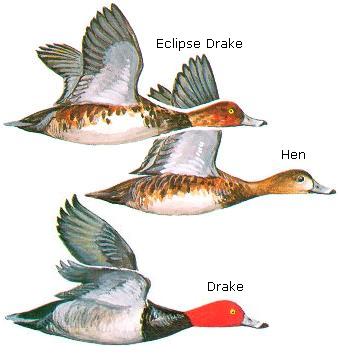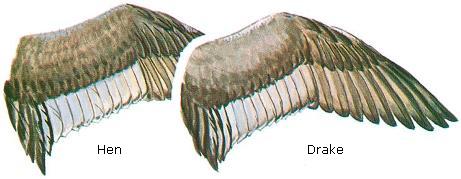Wildlife - Species

Photograph by Kevin Bercaw - Wikipedia
Species Specific Regulations
Redhead
Licenses: Hunting License required. Migratory Bird Hunting and Conservation Stamp (Federal Duck Stamp) that is validated by the hunter signing the stamp in ink across the face of the stamp
Limits: Please see Migratory Bird Regulations for any game zones restrictions or Limitations.
Redhead (Aythya americana)

Description
The redhead is an aptly named duck, known for its rounded red head. Unlike the similar looking canvasback, their bill is blue with a black tip.
Average Size
Redheads have an average length of 20 inches and an average weight of 2 1/2 pounds.
Range
These ducks are found coast to coast, with the largest numbers in the Central flyway. Redheads can be found in South Carolina during the winter months.
Preferred Habitat
Redheads are habitat generalists in the summer, using most types of wetlands. In the breeding range they most commonly use seasonally and semi-permanently flooded wetlands in the Prairie Pothole Region. In the winter months redheads become habitat specialists, relying on shallow, low-energy, coastal ecosystems.
Typical Flock Pattern

Wings

Food Habits
During the breeding season redheads usually feed on the vegetative parts and tubers of submerged aquatic plants, as well as seeds and aquatic invertebrates. In the winter they eat mainly plant material and saltwater mollusks.
Reproduction
Mated pairs form on the wintering grounds. On return to the breeding grounds the female constructs her nest overwater in dense, tall, emergent vegetation. The hen pulls in nearby vegetation, weaving it together to form a circular nest. Here she lays 7-14 pale olive buff eggs. Female redheads are also known for laying their eggs in the nests of other ducks.
Sound
Drakes purr and meow, and hens have a loud squak, higher than a hen mallard's.
Behavior
- Often found associating with canvasback.
- Usually spend the day in large rafts in deep water.
- Male is not territorial during the breeding season but will defended his mate when threatened.
- This highly social species has earned the nickname "the raft duck." Flocks in the winter can be in the thousands.
Citations, Publications and Literature
U.S. Fish & Wildlife Service, Federal Duck Stamp Office Presents: North American Waterfowl (Adobe PDF file)
Woodin, Marc C. and Thomas C. Michot. 2002. Redhead (Aythya americana), The Birds of North America Online (A. Poole, Ed.). Ithaca: Cornell Lab of Ornithology; Retrieved from the Birds of North America Online
South Carolina waterfowl hunters 16 and older are required by state law to obtain a state migratory waterfowl permit and Migratory Game Bird permit. Both permits must be in the hunter's possession while hunting or transporting legal waterfowl. A state waterfowl permit is included with the Lifetime Senior, Lifetime Gratis and Disability Licenses. S.C. residents who hold a Lifetime Senior or Lifetime Gratis License are not required to have a Migratory Game Bird permit.
National Migratory Bird Harvest Information Program (HIP)
The waterfowl permits and HIP permits are available from select DNR offices and from hunting and fishing license agents.